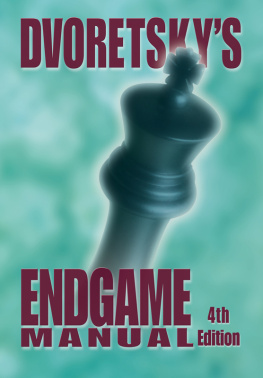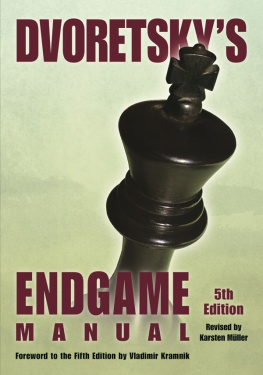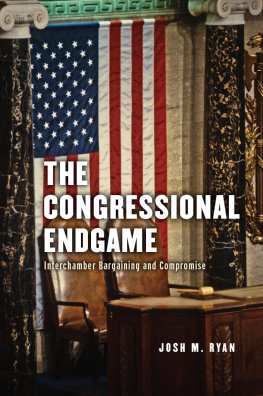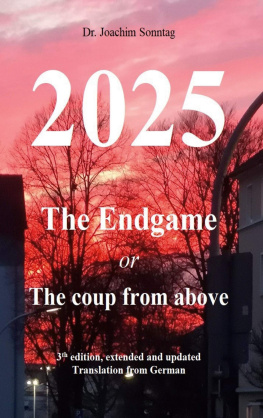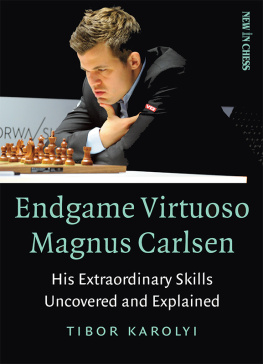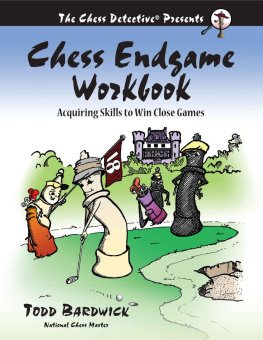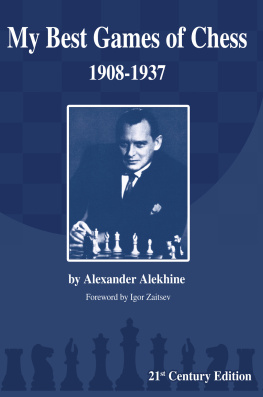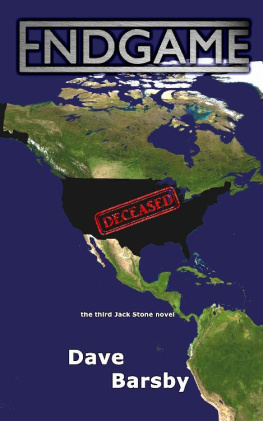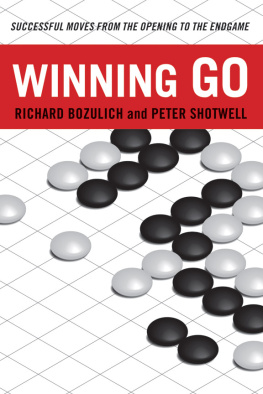Dvoretskys
Endgame
Manual
Fourth Edition
by
Mark Dvoretsky
Foreword by Artur Yusupov
Preface by Jacob Aagaard

2014
Russell Enterprises, Inc.
Milford, CT USA
Dvoretskys Endgame Manual
Fourth Edition
Copyright 2003, 2006, 2008, 2011, 2014
Mark Dvoretsky
ISBN: 978-1-941270-04-2
All Rights Reserved
No part of this book maybe used, reproduced, stored in a retrieval system or transmitted in any manner or form whatsoever or by any means, electronic, electrostatic, magnetic tape, photocopying, recording or otherwise, without the express written permission from the publisher except in the case of brief quotations embodied in critical articles or reviews.
First Edition 2003
Second Edition, First Printing 2006
Second Edition, Second Printing 2008
Third Edition 2011
Fourth Edition 2014
Published by:
Russell Enterprises, Inc.
PO Box 3131
Milford, CT 06460 USA
http://www.russell-enterprises.com
Cover design by Pamela Terry, Opus 1 Design
Back cover photograph of Mark Dvoretsky by Carl G. Russell
Printed in the United States of America

Foreword
My cooperation and friendship with Mark Dvoretsky has already lasted almost 30 years. He was more than just a coach or second. He was my most important chess teacher. I owe my greatest victories to him and we are still in contact with each other quite often.
Mark has developed a method that can catapult a talented player from Elo 2200 to grandmaster level in 4 to 5 years. An important part of this procedure is the study of the endgame. Mark firmly believes that endgame technique is of universal value. He recognized this when he prepared several endgame sessions for the education of prospective Russian chess trainers. At first he thought that the job was routine work, only requiring him to write down what he already knew. But suddenly he realized that he was playing better!
I also believe in the interactive effect of endgame study. It makes it easier to judge and use the potential of the pieces and to understand their interaction. So not only our endgame technique, but also our intuition and positional understanding are refined. In the endgame, plans must be found all the time so it sharpens our strategic eye as well.
So I was very happy when Mark told me two years ago, that he was planning to write an endgame manual. Now this work by one of the worlds leading endgame specialists has appeared and you can enjoy the fruits of his labor. I am sure that those who study this work carefully will not only play the endgame better, but overall, their play will improve. One of the secrets of the Russian chess school is now before you, dear reader!
International Grandmaster Artur Yusupov
Weissenhorn
September 2003
Preface
The first time I heard about the book you are now holding in your hands was in the summer of 2000, when Mark Dvoretsky was giving lectures in Copenhagen for a group of the best Danish players. I had only just been able to put my jaw back in place after being rushed through a rook ending I was badly prepared to understand. What had fascinated me most was not that rook endings could be explained the way Mark explained them, but that the simplicity of dicta like the rook should always be active had such far reaching practical implications. Hey, I can actually understand this! was the thought running through my head. The game Flohr-Vidmar, Nottingham 1936 (p. 227) especially impressed me. Mark then told us that he was indeed working on a new book on the endgame, a comprehensive manual which would be finished within a year.
In fact it took far more than a year, and to be honest, I am not really sure that Mark will ever finish his work with this book or that he should. In the summer of 2002 the German version, titled Die Endspieluniversitt, was published. And I am the proud owner of the first ever signed copy of the book I called The best chess book ever written in a 10-page review in the Swedish chess magazine Schacknytt.
Since the book was released (and I wrote my review) I have worked with it, in both my own training and my work with juniors, and I have come to the following conclusion: Going through this book will certainly improve your endgame knowledge, but just as important, it will also greatly improve your ability to calculate variations. In particular, the section on pawn endings has convinced me that solving studies and pawn endings should be an important part of my pre-tournament training (and when am I not preparing for the next tournament?). So the book is practical indeed, more so than any other book in my extensive library.
But there is another point, just as important, regarding the general sense of aesthetics in the book. The studies, both those selected and those created by the author himself, are not just instructive, but some of the finest studies I have ever seen.
But what really impresses me is the deep level of analysis in the book. Rules and techniques are important for the practical player in the development of ability, but if the analysis is less than thorough, it is hard to really get into the text. Improvements have been found to the analysis of the German edition and incorporated into the English edition and Mark is always ready to discuss and improve his analysis with anyone. He understands fully that a book has a life and rights of its own. Greatness is possible, but perfection may not be. I must admit that I personally feel as if Shakespeare asked me to write a foreword to Hamlet, and yes, I must admit that I suffer from a lot of confusion as to why he did this. All I can say is: This is a great book. I hope it will bring you as much pleasure as it has me.
International Grandmaster Jacob Aagaard
Copenhagen
September 2003
From the Author (First Edition)
Endgame theory is not a complicated subject to study!
All one needs is thorough knowledge of a limited number of precise positions (as a rule, elementary ones) plus some of the most important principles, evaluations, and standard techniques. The question is, how to select the most important material from the thousands of endings analyzed in various handbooks? That is why this book was written: it offers the basic information you need as the foundation of your own personal endgame theory.
As long ago as 1970, when I was just a young chess master and a student at Moscow University, I was unexpectedly invited to give some endgame lectures to the chess faculty of the Moscow High School for Sports. It was then that I had to think about what exactly a practical chess player must study. I defined sound methods of studying endgame theory (from the point of view of logic, rather obvious ones) and prepared examples of the most important types of endgames (pawn, rook-and-pawn endgames, and those with opposite-color bishops). I also prepared a series of lectures on the general principles of endgame play. By the way, the main ideas of that series became (with my permission) the basis of the popular book Endgame Strategy by Mikhail Shereshevsky (I recommend that book to my readers).
Later on, these materials, continually corrected and enlarged, were used in teaching numerous apprentices. They proved to be universal and useful for players of widely different levels: from ordinary amateurs to the worlds leading grandmasters. My work with grandmasters, some of them belonging to the worlds Top Ten, have convinced me that almost none of them had studied chess endings systematically. They either did not know or did not remember many important endgame positions and ideas, which can be absorbed even by those of relatively modest chess experience. As a result, even among grandmasters, grave errors occur even in elementary situations: you will find plenty of examples in this book. Some grandmasters asked me to help them, and our studies resulted usually in a substantial improvement of their tournament achievements. Two weeks of intensive study were usually more than enough to eliminate the gaps in their endgame education.
Next page
